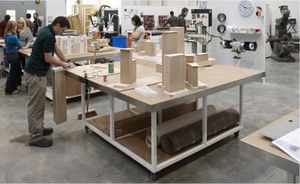Models and Modelling: Difference between revisions
From DT Online
m (Added category links) |
m (Added category link) |
||
| Line 12: | Line 12: | ||
[[Category:Secondary]] | [[Category:Secondary]] | ||
[[Category:Graphics and Modelling Techniques]] | |||
[[Category:Terminology]] | [[Category:Terminology]] | ||
Revision as of 16:16, 2 June 2015
Models are simplified representations of reality constructed to explore particular aspects or properties. Models can be classified as follows:
- Iconic Models
These look like the real thing although usually made in more easily worked materials and often made to scale. They are useful for communicating design ideas and 3D models, made of card, foam or 3D printed for example, can be handled to gain a ‘feel’ for the finished product. Sketching can be regarded as 2D iconic modelling as can the use of computer software to generate drawings, illustrations or publications prior to printing.
- Analogue Models
Circuit diagrams do not look like the finished circuit but they serve to illustrate how it would work. Flow Diagrams and other diagrams, graphs and charts may be forms of analogue modelling.
- Symbolic Models
Mathematical models, especially when used with computers, can quickly show the effects of changing variables. They are used when situations are too complex or too abstract to be portrayed through an iconic or analogue model and involve symbols that can be manipulated in a meaningful and fruitful way. Spreadsheets can show how a number of mathematcal models may operate together.
